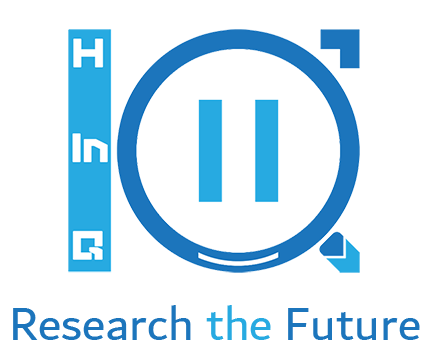Introduction – Businesses Are Drowning in Data Across All Departments
Businesses generate and collect vast amounts of data across every department—HR, Marketing, Sales, Finance, Manufacturing, and beyond. But data alone isn’t enough. Without the right tools to analyze and act on it, businesses risk making slower, less-informed decisions.
Traditional analytics dashboards, while useful, often fail to keep up with the complexity of real-time, cross-departmental data. The problem isn’t the lack of information—it’s the lack of clarity and accessibility. This is where AI-powered dashboards with voice-command capabilities come in, transforming raw data into immediate, actionable intelligence across all areas of a business. The use of voice makes the potential of advanced analytics accessible even to non-experts, making it possible to generate insights at scale.
But not all dashboards are created equal. Poorly designed dashboards can mislead decision-makers, creating a false sense of security or overwhelming users with irrelevant data. To truly harness their power, businesses must understand how to design AI-enhanced dashboards that highlight what matters most—and that’s exactly what this article will explore.
AI Dashboards: The Ultimate Decision-Making Tool
Businesses invest heavily in data collection, yet most struggle to transform that data into practical business intelligence. The missing link? AI-powered dashboards that don’t just display data, but interact with it.
A well-built AI dashboard acts as a real-time command center, consolidating data from multiple sources—employee performance, supply chain logistics, financial forecasting, sales trends, and more—into an interactive, voice-activated interface. Unlike static reporting tools, AI dashboards allow users to ask questions via voice commands, receive immediate insights, and adjust strategies on the fly.
However, many companies still treat dashboards as passive data displays rather than proactive decision-making tools. When used correctly, AI-powered dashboards contextualize information, eliminate noise, and surface key insights that drive efficiency across all business functions.
If companies want to stay competitive, they must shift from reactive reporting to AI-driven, real-time intelligence.
Filters: The Hidden Superpower of AI-Enhanced Dashboards
Across all departments, filtering data effectively is critical. AI-driven dashboards don’t just present endless rows of numbers—they use intelligent filters to prioritize the most relevant insights based on context, user behavior, and real-time conditions.
Consider a global manufacturing firm monitoring supply chain disruptions. An AI-powered dashboard can automatically highlight bottlenecks, predict delays, and suggest alternative suppliers in real time. Similarly, a sales team can filter through past, present, and predicted customer interactions, ensuring that the most high-value leads are prioritized.
However, the efficacy of filters depends on their design. Poorly structured filters lead to information overload or obscure critical data. AI-powered filtering mechanisms dynamically adjust to user needs, ensuring that each team accesses only the data most relevant to their role.
More Data, More Problems? AI Keeps Insights Relevant
Many businesses assume that more data means better decision-making—but that’s not always true. Data overload can be just as damaging as data scarcity. Without the right AI-driven dashboard structure, companies risk being overwhelmed by excessive information, unable to distinguish between what’s useful and what’s just noise.
Take Netflix, for example. The streaming giant doesn’t just collect massive amounts of viewer data—it filters and prioritizes the most relevant insights to optimize recommendations, predict churn rates, and determine which content to invest in. Without AI-driven filtering and prioritization, their data would be overwhelming and ineffective.
For businesses, this means understanding that not all data is equally valuable. The most effective dashboards use AI to highlight only the most actionable insights while filtering out distractions. Organizations that fail to implement intelligent prioritization will find themselves buried under numbers while their AI-driven competitors move ahead with clarity.
Voice-Activated Dashboards: The Future of Business Intelligence
AI-powered dashboards are no longer just visual—they’re conversational. Voice-command functionality is transforming how executives, managers, and employees interact with data. Instead of manually searching through spreadsheets or running complex queries, leaders can simply ask a question and receive instant, AI-generated insights.
For example, a CFO could ask, “How did our operating expenses change over the last quarter?” and receive an immediate spoken response with trend analysis and key drivers. A sales manager could say, “Show me our highest-converting customer segments,” and the dashboard would display a prioritized list based on past, present, and predictive data.
This hands-free, real-time data access not only boosts efficiency but also ensures that businesses are making data-driven decisions faster than ever before. Voice-command capabilities make advanced analytics accessible even to non-experts, empowering everyone within the organization to make informed choices without needing specialized skills.
Conclusion – AI-Powered Dashboards Are the Future of Business Intelligence
The days of static reports and outdated market research are over. In an era where businesses must adapt in real time, AI-powered dashboards are revolutionizing decision-making across HR, Sales, Finance, Manufacturing, and beyond. They bridge the gap between raw data and meaningful action, allowing organizations to filter out noise, focus on what truly matters, and make instant, informed decisions.
However, a dashboard is only as powerful as its design and functionality. A cluttered, poorly structured dashboard does more harm than good, leading to confusion instead of clarity. Businesses that fail to integrate AI-powered insights, intelligent filtering, and voice-command capabilities will struggle to compete with companies embracing real-time, AI-driven intelligence.
The future is here. Businesses that refine their AI dashboards today will dominate their industries tomorrow.
References:
- AI in Business Intelligence
- How AI is Transforming Enterprise Data
- The Future of AI-Powered Dashboards
- H-in-Q Analytics



